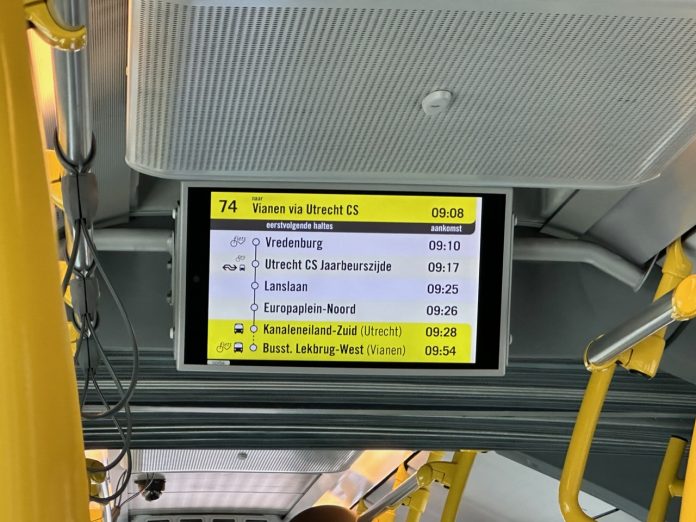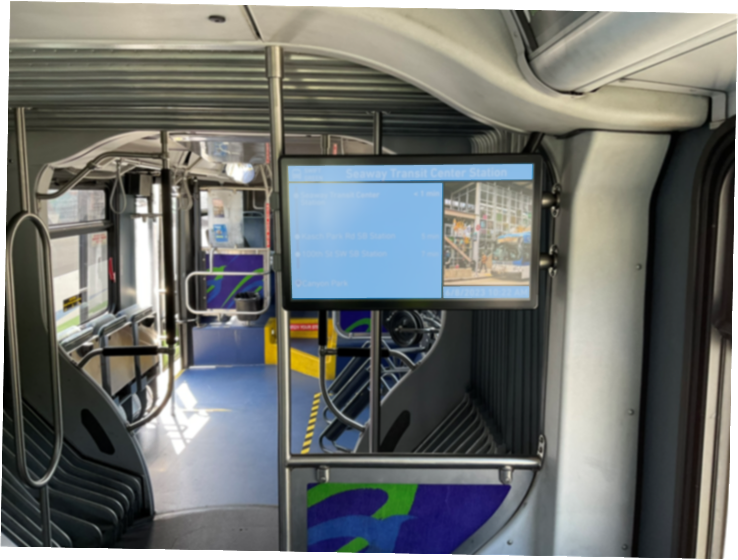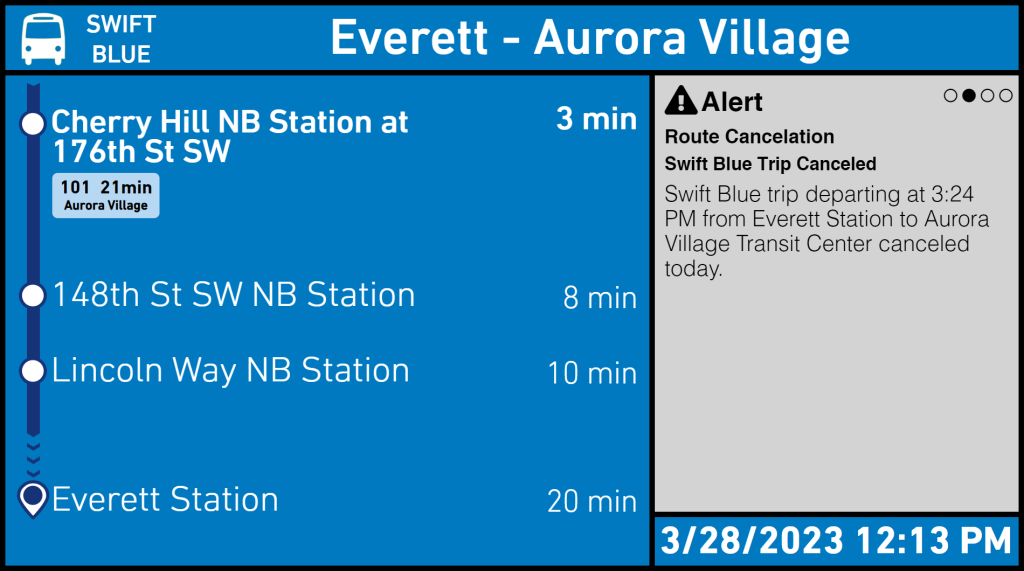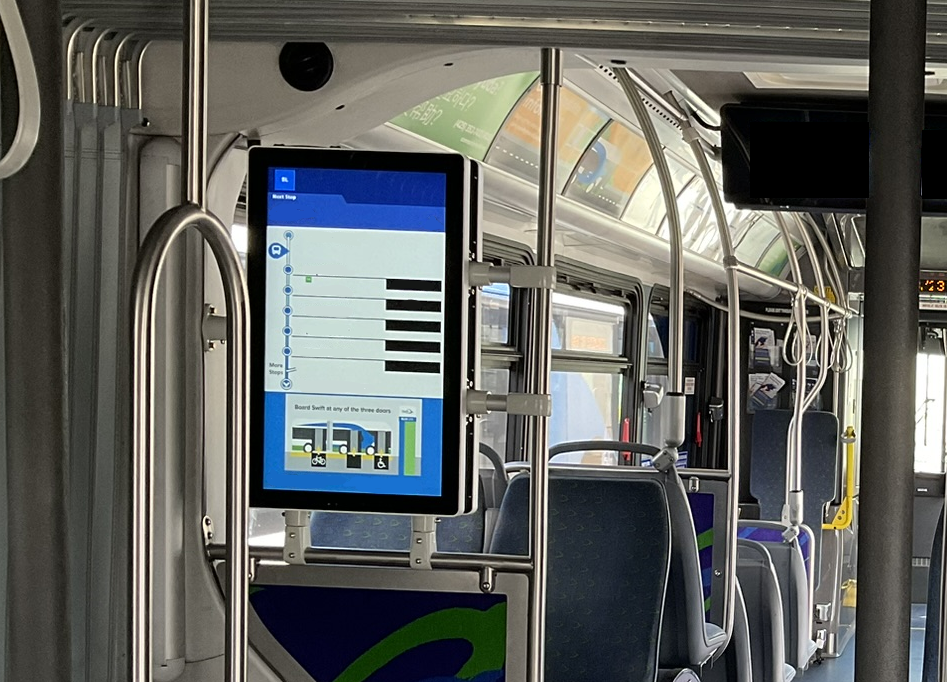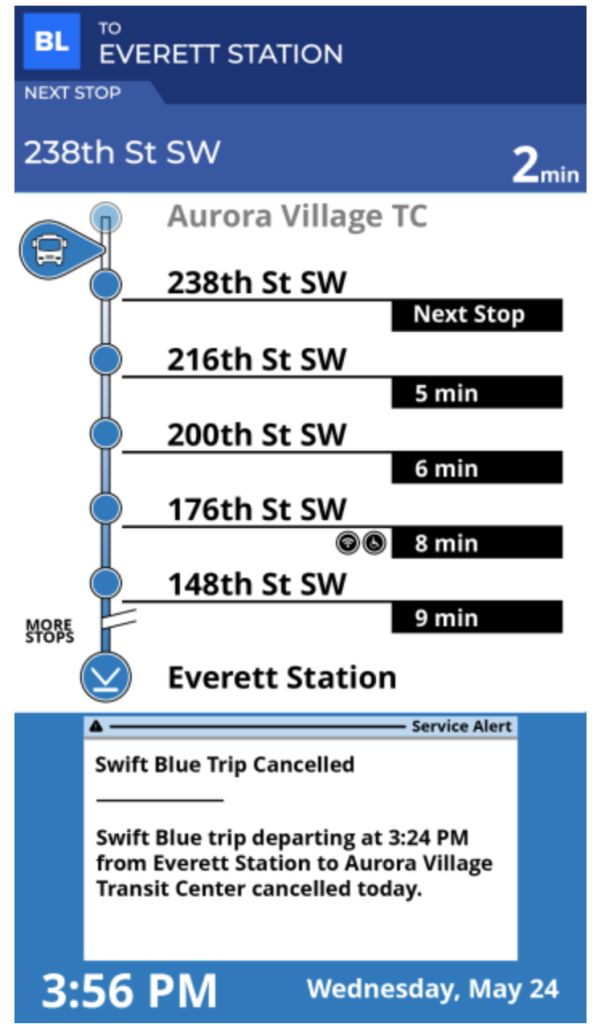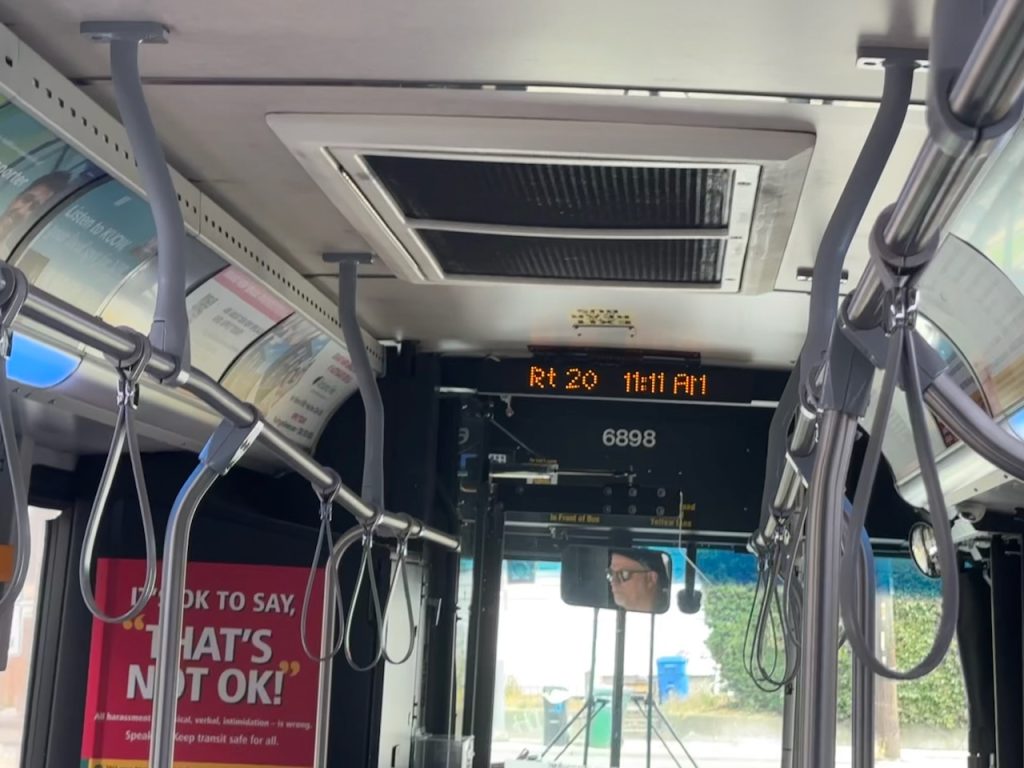Community Transit is the first transit agency in Puget Sound to debut modern onboard digital signage for buses. The signage tracks the progression of buses along their routes and displays following stops with estimated arrival times. Right now, the agency is testing several screen types on select Swift buses to decide which will best serve riders.
The agency is typically running two buses outfitted with the signage, so riders are already seeing them on some trips. But they will become much more common next year. When the Swift Orange Line is launched in March, Community Transit will deploy the technology on 15 new Swift buses. Those buses will ultimately end up in vehicle rotation, so they could appear on any Swift line.
Fifteen buses with modern onboard digital signage is a relatively small scope start, but it could lead to much more in the future. “Decisions will be made after these are in service whether to expand them to other Swift buses, and to other non-Swift buses,” said Community Transit spokesperson Martin Munguia.
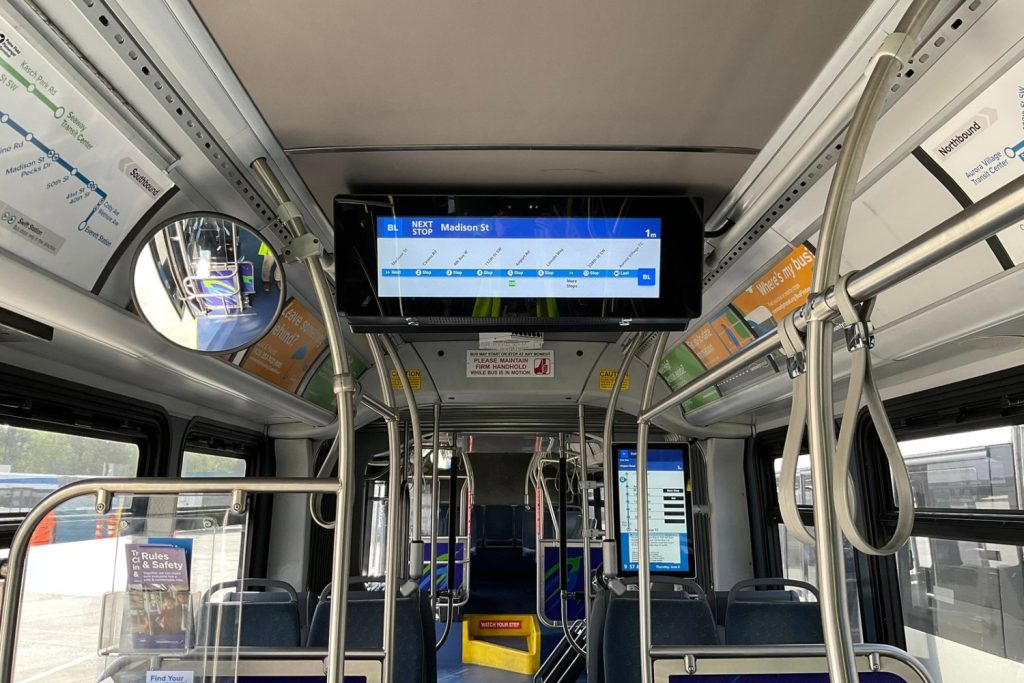
In the test phase, select Swift buses are featuring three types of signage: a large overhead screen and two smaller panel screen types at strategic locations. The large overhead screen type is similar in design to newer onboard Link screens while the smaller panel screens come in landscape and portrait formats.
For the large overhead screen type, riders are offered a progression bar highlighting upcoming stops as well as the last one of the line. The next stop information is prominently displayed with an estimated arrival time above the progression bar.
As for the smaller panel screens, Community Transit is trialing different ways to display content on them:
- Option A offers information on a landscape-oriented screen type. The screen could be split into four parts to show the name of the route, next stop information, special alerts and notices, and the current date and time. The next stop information would be able to graphically show several next stops, the terminal stop, estimated travel time to the stops, and connecting scheduled services at the stops.
- Option B offers information on a portrait-oriented screen type. The screen could be split in several sections vertically to highlight similar information as Option A. The appearance is more app-like than Option B and offers more next stops, but omits connecting scheduled service information.
Surveys on Option A and Option B are open for public feedback. Community Transit wants to know how intuitive the designs are and how much riders like them. The agency also is gauging opinions on potential add-ons, such as a live map showing the location of a bus, Community Transit news, rider etiquette reminders, and customer care hotline information.
When asked about whether the large overhead screen type would be a default feature, Munguia simply said that it was “being tested as a possible screen option.” Which screen types that will ultimately be picked is still too early to say.
Regardless of which screens are chosen and how information might be refined on them, modern digital signs like these on buses are a big leap forward in Puget Sound, offering significant benefit to the rider experience. That’s because giving more live information empowers rider decision-making and helps sets expectations. Riders can feel more confident about where their bus is headed, their next stop options, other transit connections, and how long it’s going to take to get to their intended stop.
Under the prevailing paradigm in Puget Sound, bus riders are left with very little information. One or two dot matrix signs are provided on buses. Those signs provide rotating information on the route, time, and next stop. And when a rider requests a stop, the stop name intermittently goes away in favor of “Stop Requested” text. Slightly supplementing this, a single chime and audio announcement are the only other cues to riders of the next stop. It’s some information, but it’s not much.
Modern digital sign technology on buses is often an industry standard abroad, and it certainly would be welcome as a basic feature on all buses in Puget Sound. But for now, it’s Community Transit leading the regional transit pack on a modest scale. In time, that could change.
Stephen is a professional urban planner in Puget Sound with a passion for sustainable, livable, and diverse cities. He is especially interested in how policies, regulations, and programs can promote positive outcomes for communities. With stints in great cities like Bellingham and Cork, Stephen currently lives in Seattle. He primarily covers land use and transportation issues and has been with The Urbanist since 2014.


